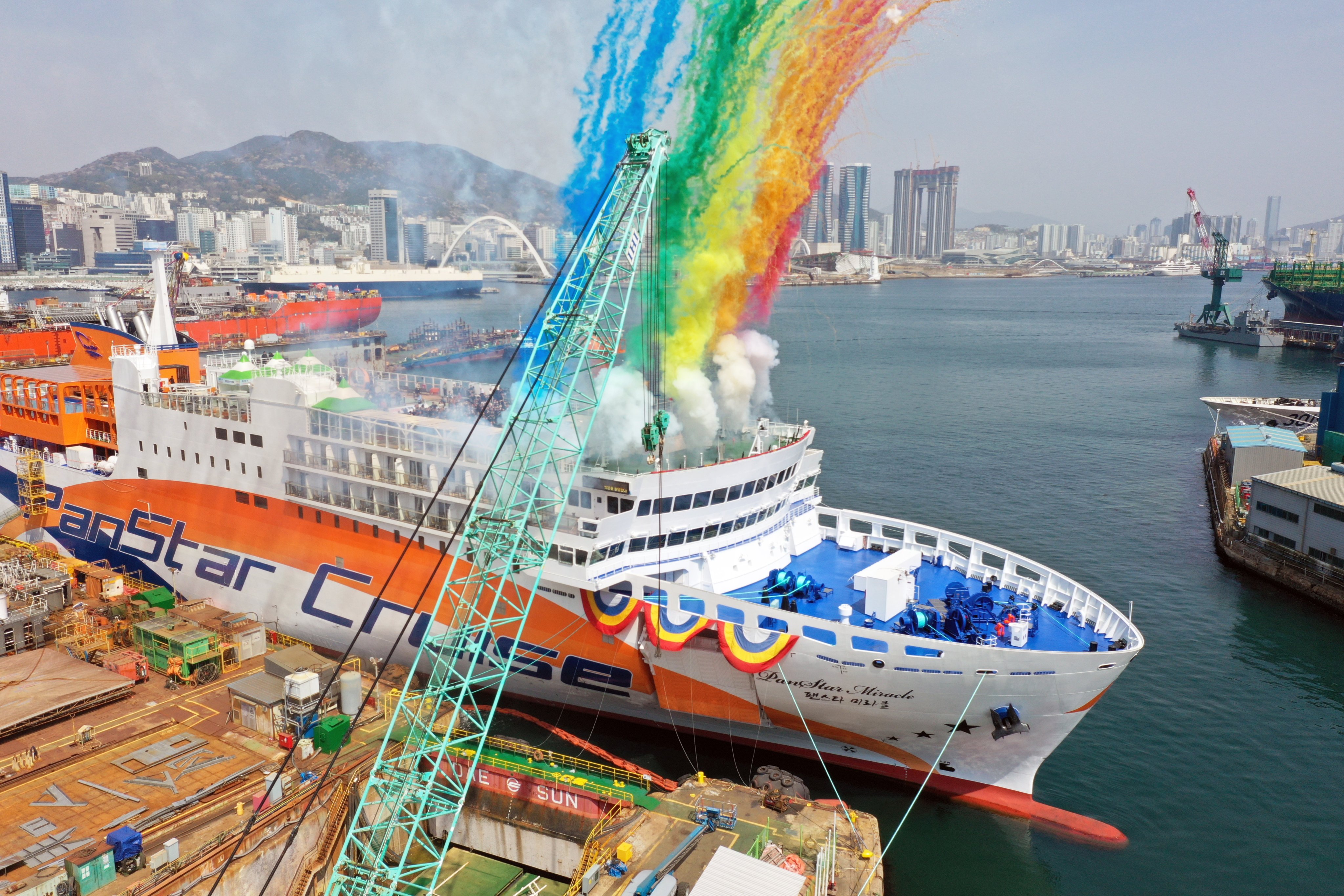Despite headwinds faced by China, it’s not all plain sailing for Korean shipbuilders
America’s plan to impose higher docking fees on vessels made in China will be a blow, but South Korean shipyards face capacity constraints

As the turbulent trade relationship between the US and China sends ripples across the global shipbuilding industry, South Korean shipyards might be expecting a lift from a flood of new orders, but industry observers say competition from China will remain strong.
With the United States set to begin charging higher docking fees from October for vessels made in China, part of an ongoing trade war that has cooled somewhat following an agreement on a temporary tariff truce and the prospect of further talks between the world’s two largest economies, one scholar said China’s shipbuilding loss could be South Korea’s gain.
“Some Chinese shipbuilders could be grappling with the prospect of hard-won orders being lost [to Korean rivals],” said Zeng Ji, a professor of ocean science and engineering at Shanghai Maritime University.
While China retained top place in a global shipbuilding industry that had boomed in recent years, some of its shipbuilders had been buffeted by shocks emanating from the US this year, he added.
Until Monday’s agreement to de-escalate a bilateral tariff war, US President Donald Trump had been stoking the flames of trade conflict following his return to the White House in January.
The Office of the US Trade Representative announced on April 17 that vessels made in China would face higher docking fees from mid-October, with no indication yet that its decision will be reversed or suspended, despite the trade war ceasefire.
Meanwhile, shipbuilders in South Korea, another global powerhouse, are reporting impressive sales and surging profits.
Buoyed up by a robust order backlog, HD Korea Shipbuilding & Offshore Engineering reported strong first-quarter earnings, with operating profit up 436 per cent year on year to 859.2 billion won (US$614 million), and quarterly sales of 6.7 trillion won, up 22 per cent.
Samsung Heavy Industries’ first-quarter net profit was up tenfold to 90.1 billion won, with operating profit rising to 123.1 billion won. Hanwha Ocean reported first-quarter net income of 215.7 billion won, up 323 per cent year on year.
A researcher working for a vessel navigation and communications equipment maker in Busan, who requested anonymity, said many more inquiries were being received nowadays, with some fresh orders being negotiated with Korean firms.
What remains unchanged are China’s competitive edges in efficiency, cost, pricing and supply chain integrationZeng Ji, Shanghai Maritime University
“US measures like steep port fees on Chinese ships and the Ships for America Act will push more American clients to Korea,” he said, suggesting the benefits would become more apparent in the long run.
But Zeng said China’s resilience and dominance could not be easily overcome.
“What remains unchanged are China’s competitive edges in efficiency, cost, pricing and supply chain integration,” he said. “My judgment is that there may be some orders flowing in Korea’s direction but the numbers may not be significant as China has resilience.
“It remains to be seen if Korea can reap substantial benefits, given their constraints.”
In the first quarter of this year, Chinese shipbuilders received orders for ships totalling 9.451 million deadweight tons, accounting for more than half the global total, compared with Korea’s 35.4 per cent share, according to shipping data provider Clarksons Research, which is based in the United Kingdom.
China grabbed 70 per cent of global orders last year, leaving South Korean firms with 17 per cent.
However, Clarksons warned that China’s share could fluctuate in the near term.
One factor that could contribute to an increase in South Korea’s share of the global industry is warship orders. On top of commercial vessels, the US is also teaming up with Hanwha and the like to build and service naval ships.
Last year, Hanwha became the first Korean shipyard to secure lucrative maintenance, repair and overhaul contracts from the US Navy.
But during recent trade talks with Washington, Seoul cited shipbuilding as one key area of cooperation that could help address their bilateral trade imbalance, potentially casting a shadow over Korean shipyards’ long-term prospects.
Zeng said Korean shipyards faced hurdles in rapidly scaling up to meet new demand and were also grappling with a labour shortage.
“China also has some capacity constraints, but good production management is also part of the competition,” he said. “Orders will flow to those who can build quickly.”